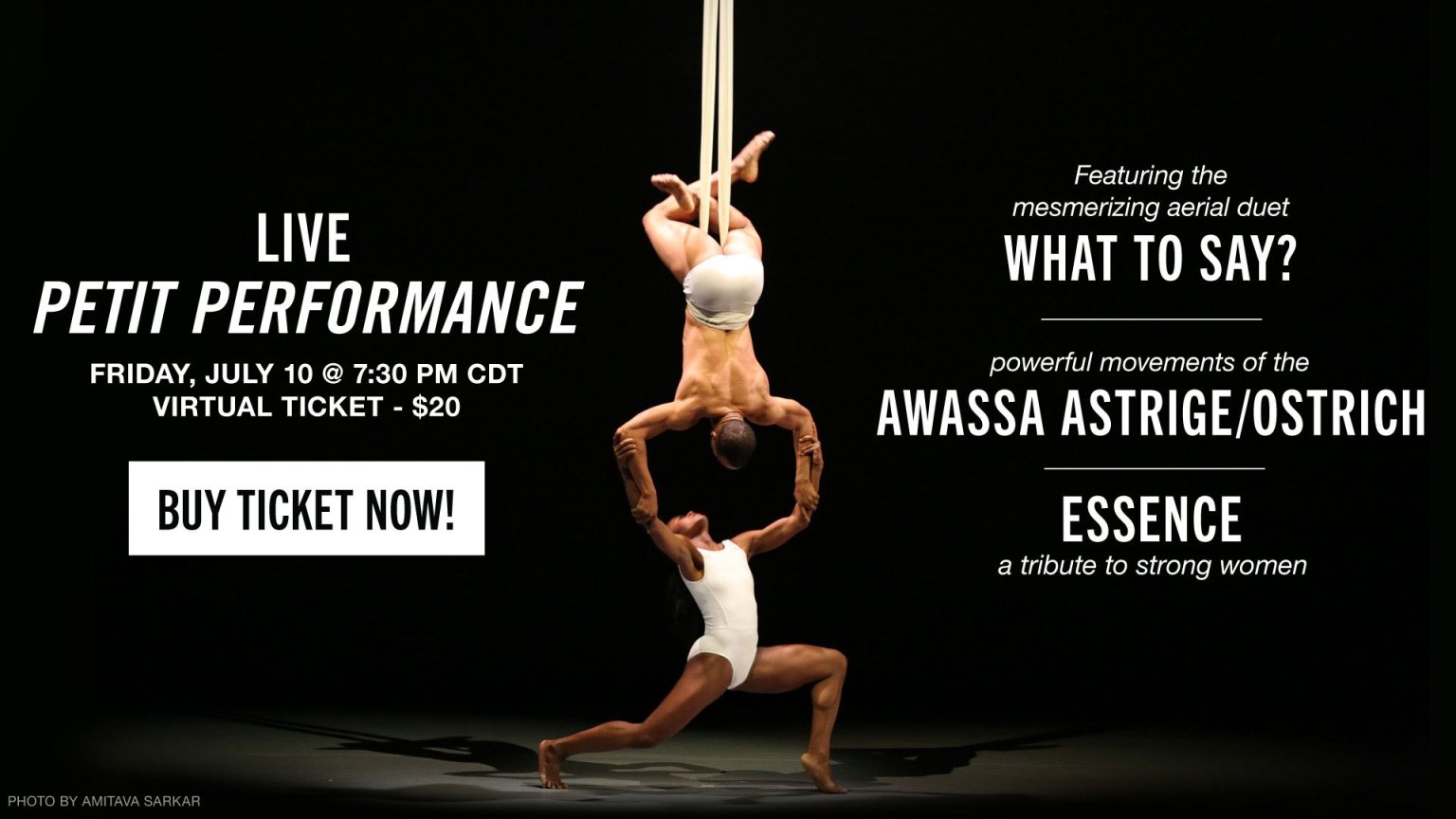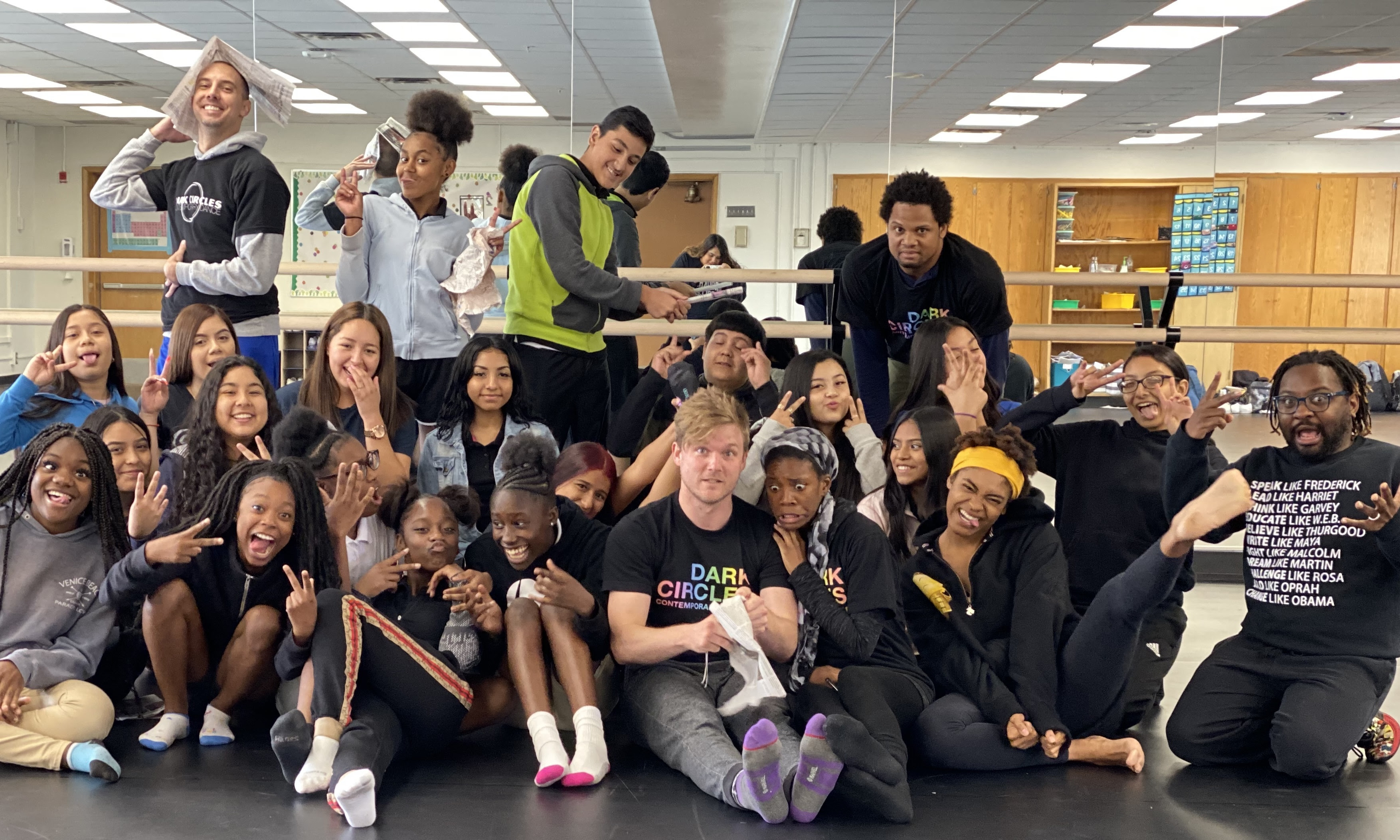Dallas Black Dance Theatre: Encore! celebrates the 100th anniversary of the passage of the 19th Amendment in Nycole Ray’s new work Nineteenth.

Dallas – If you have seen any of Nycole Ray’s (artistic director of Dallas Black Dance Theatre (DBDT): Encore!) previous works, especially Opaque (2015) and Memory of a Memory Lost (2011), then you’re already familiar with her unique gift for creating dances packed with stunning visuals, soul stirring choreography and dramatic costuming (i.e., big billowy skirts).
If you haven’t had the chance to see Ray’s creative formula on stage then you should definitely check out her newest work, Nineteenth, which is part of DBDT: Encore’s! Rising Excellence performance on April 17-18. The virtual program also includes local choreographer Joshua L. Peugh’s romantic comedy Slump (2012) and New York-based choreographer Jess Hendricks’s pulsating Shedding Skin (2015).
Due to COVID restrictions, these works have been previously recorded with Ray and Hendricks’s pieces shot on stage at Moody Performance Hall and Peugh’s at a surprise off-site location. Sidenote: Ray says the DBDT organization will be returning to in-person performances in the Fall.
When asked how many times she has the dancers run through the piece for the camera, Ray says she really has to limit herself because more takes will mean more work for her on the editing end.
“In general, we film work twice in its entirety to get different angles and then we break it up into smaller sections so that the dancers don’t have to run it from beginning to end multiple times,” says Ray. “And if I want to get a particular section from a different angle then we just film that section again.”
The approximately 28-minute piece pays homage to the 100th anniversary of the 19th Amendment, which was ratified on August 18, 1920. As background, the women’s suffrage movement gained momentum at the start of WWI when the National American Woman Suffrage Association (NAWSA) started arguing that if women were competent enough to join in the war effort then they deserved to vote alongside men. The combination of NAWSA’s war effort and the publicity attracted by the National Woman’s Party’s (NWP) pickets at the White House garnered widespread support for woman suffrage.
In Nineteenth, Ray asks the dancers to embody the personal struggles of women as they balance families, work, and commitments with their pursuit of equality. She does this in seven sections with each one representing different moments during this era where the women’s relationships, especially those between husband and wife, are put to the test.
But Ray points out that even though the work is representing a certain time and place in history, the dancers are not portraying any one historical figure linked to the women’s suffrage movement. “I didn’t want to give them a specific character like Alice Paul or Carrie Chapman Catt. I want the dancers to represent all the leaders within the movement.”
She adds, “You’re going to identify that there is a leader among the women who pulls them together to say we can do this. And yes, one of the men will be the person to write and sign-in for the 19th Amendment to be passed.”
To help the dancers gain a better understanding of what these women were fighting for Ray created subtitles for each section. “I explained to them what the section is about and how we’re going to transition from one section into another. And I talked to them about why this was happening to help get them in a mindset of understanding how it would feel to not have the right to do something.”
She continues, “I also wanted them to channel in to something that has been current here in the United States with certain things that have been going on. I’m giving them tidbits of history throughout so they can understand, and I believe they learned a lot from this.”
One such learning moment occurred during the section where the women are sent to jail. As to why she decided to show this particular side of the suffrage movement Ray explains, “I wanted to explore what that would have been like for them in jail because that wouldn’t have been a common thing back then. Men thought of us as these fragile and uneducated beings who don’t have the constitution to stand up and fight. So, you’ll see them exploring that and also their dynamic with each other, including who is afraid, who is holding the group up and who is encouraging them to ‘stay strong ladies.’”

As shown in the image above, Ray went with a black and white color scheme for the costuming, which she crafted with the help of her artistic assistant Richard A. Freeman, Jr.
The women are covered head to toe in ruffle-edged blouses, knee-length buttoned up coats and Ray’s signature large billowy skirt. The men are also covered head to toe in collared dress shirts, vests and overcoats which Ray ties together with dark dress pants. Ray points out that if you look closely you will be able to make out a subtle African print on the outfits.
“I didn’t want it to be so literal,” Ray says about her costume choices. “But I wanted people to get it and have a feeling for it so, I decided to go with a pattern, which has some undertones in there, but it doesn’t speak to you right away as an African print.”
Ray also says she went with a subtle African print because she didn’t want to make this work all about race even through there were plenty of things happening during this time centered on race. “I just didn’t want to go that route,” says Ray. “And so, I have underlying tones of culture in it.”
Another example of these cultural tones Ray speaks on can be found in the black and white pattern on the women’s leggings. “The leggings represent to me newspaper articles of the suffrage movement and so all the women will have them on.”
Regarding those big beautiful skirts that she is so fond of using Ray says, “I wanted some volume, but not as big as say a bustle from back in the day. I still wanted to give you a feel for that era even through they were trending down to smaller silhouettes.” She adds, “I also wanted to visually wow the audience.”
Ray has a similar mentality when it comes to her musical selections for a new work. For Nineteenth, Ray says she thought about picking music from that time period, but nothing felt right for her. “I just realized nothing from that era is going to work and so I decided to just go with something that makes me feel something. Whether it makes me feel angry or makes me feel empowered. Or maybe it makes me vulnerable.”
She continues, “I also wanted something that maybe has moments where it feels a little ominous, but also has this underlying heartbeat of drive to it as well. But then there is also this sort of softness to certain parts of it. So, I really want people to go on this emotional journey through the music as well as the movement.”
DBDT: Encore!’s Rising Excellence virtual event will begin on April 17 at 7:00pm CDT and end on April 18 at 11:59pm CDT.













